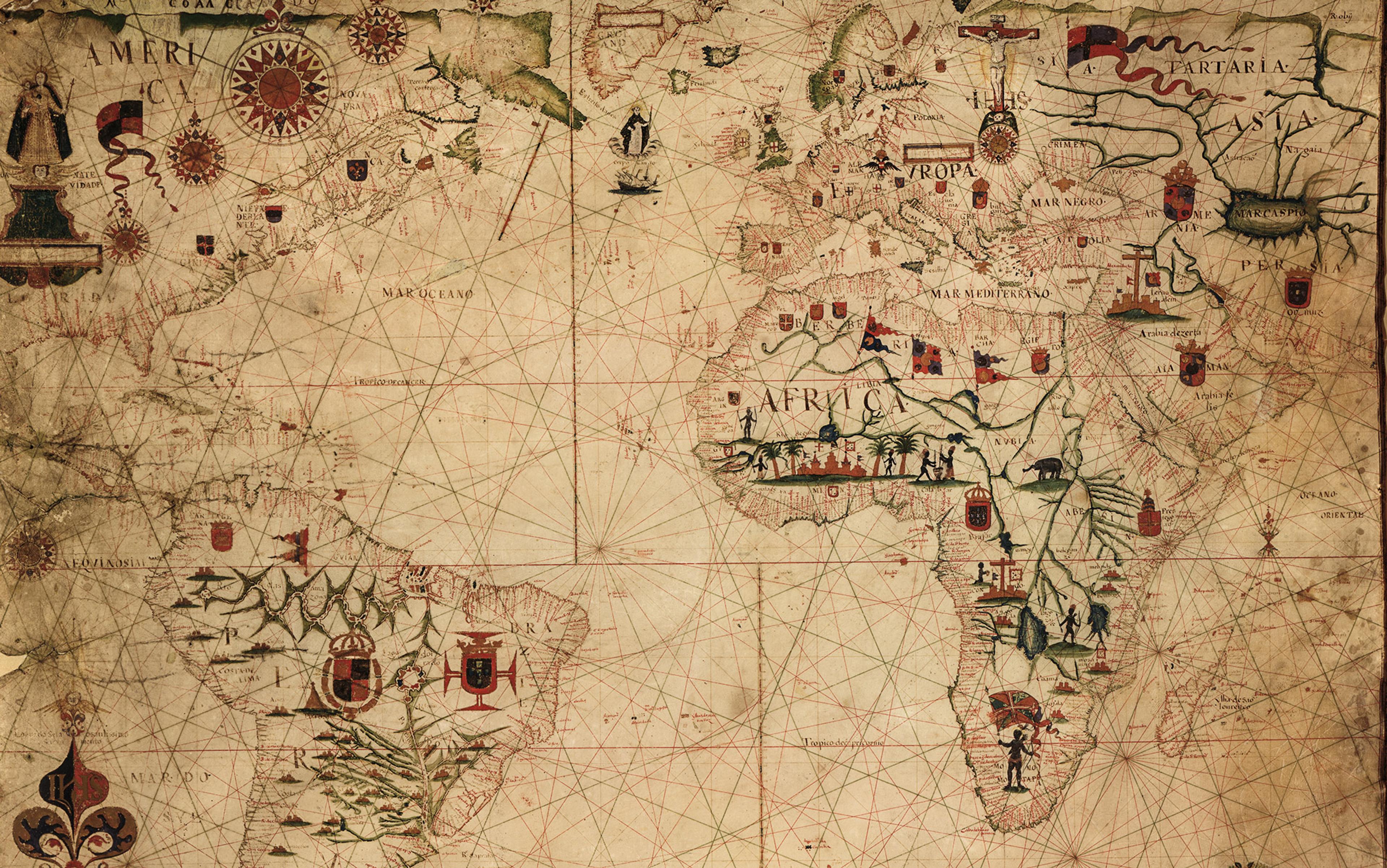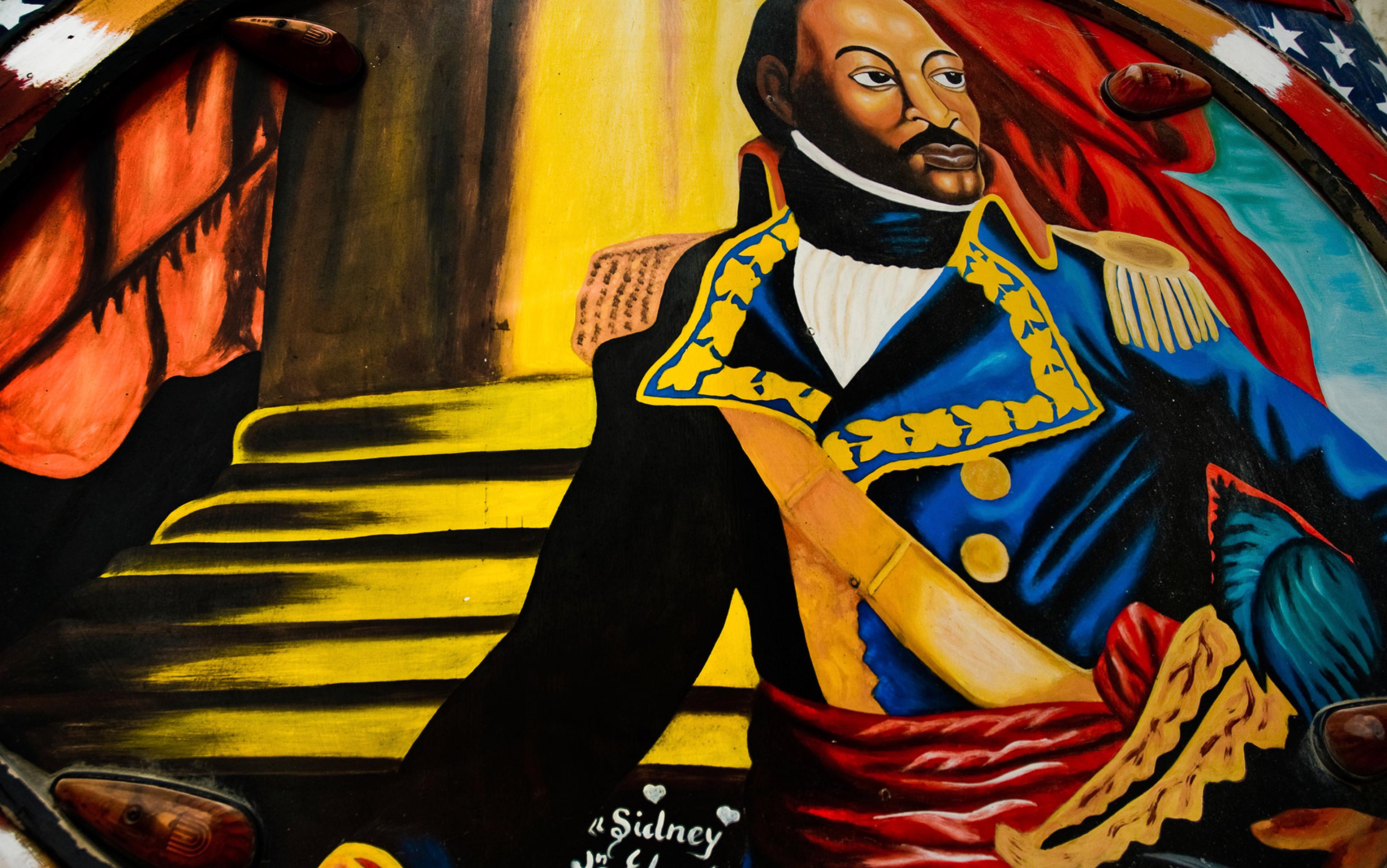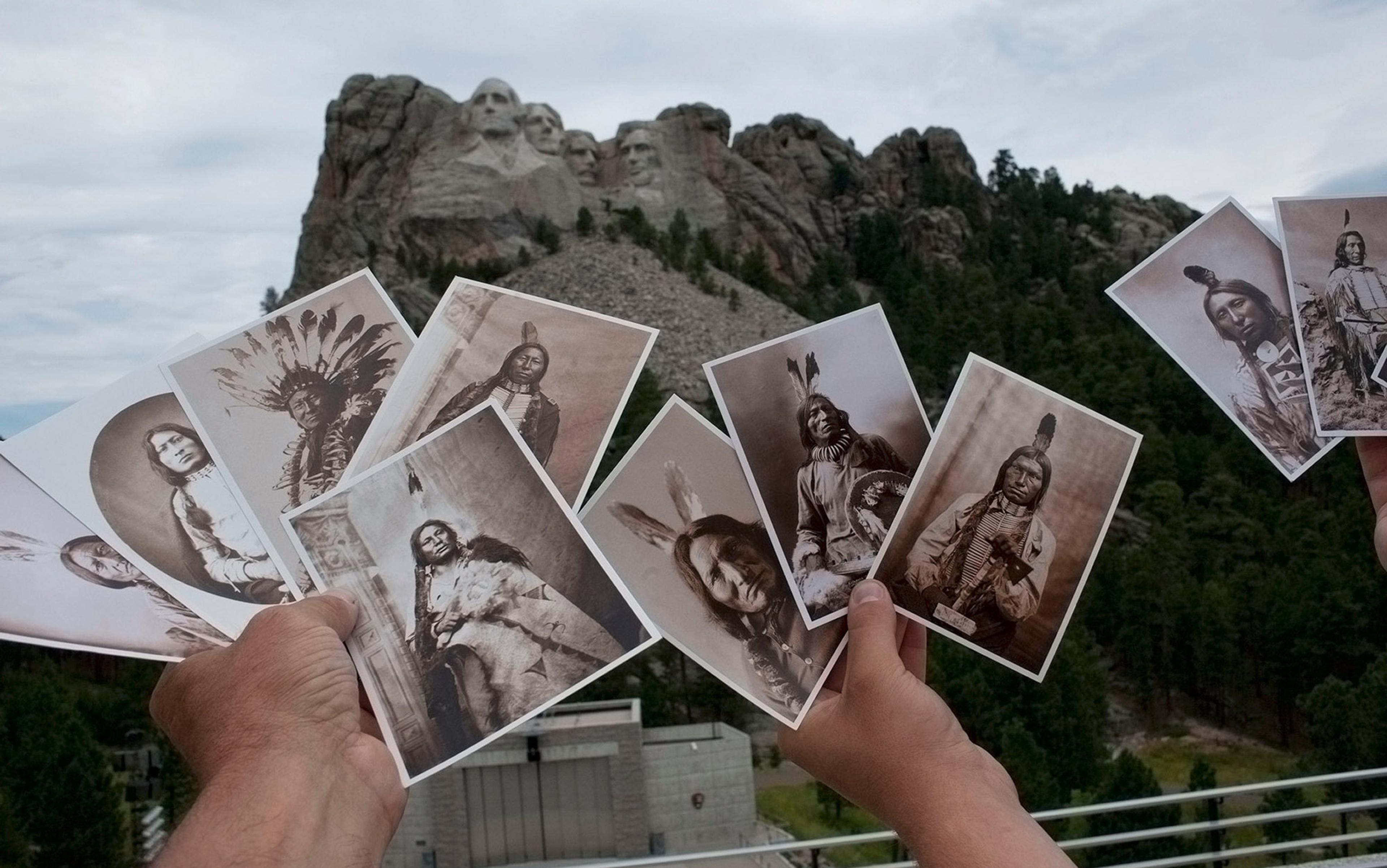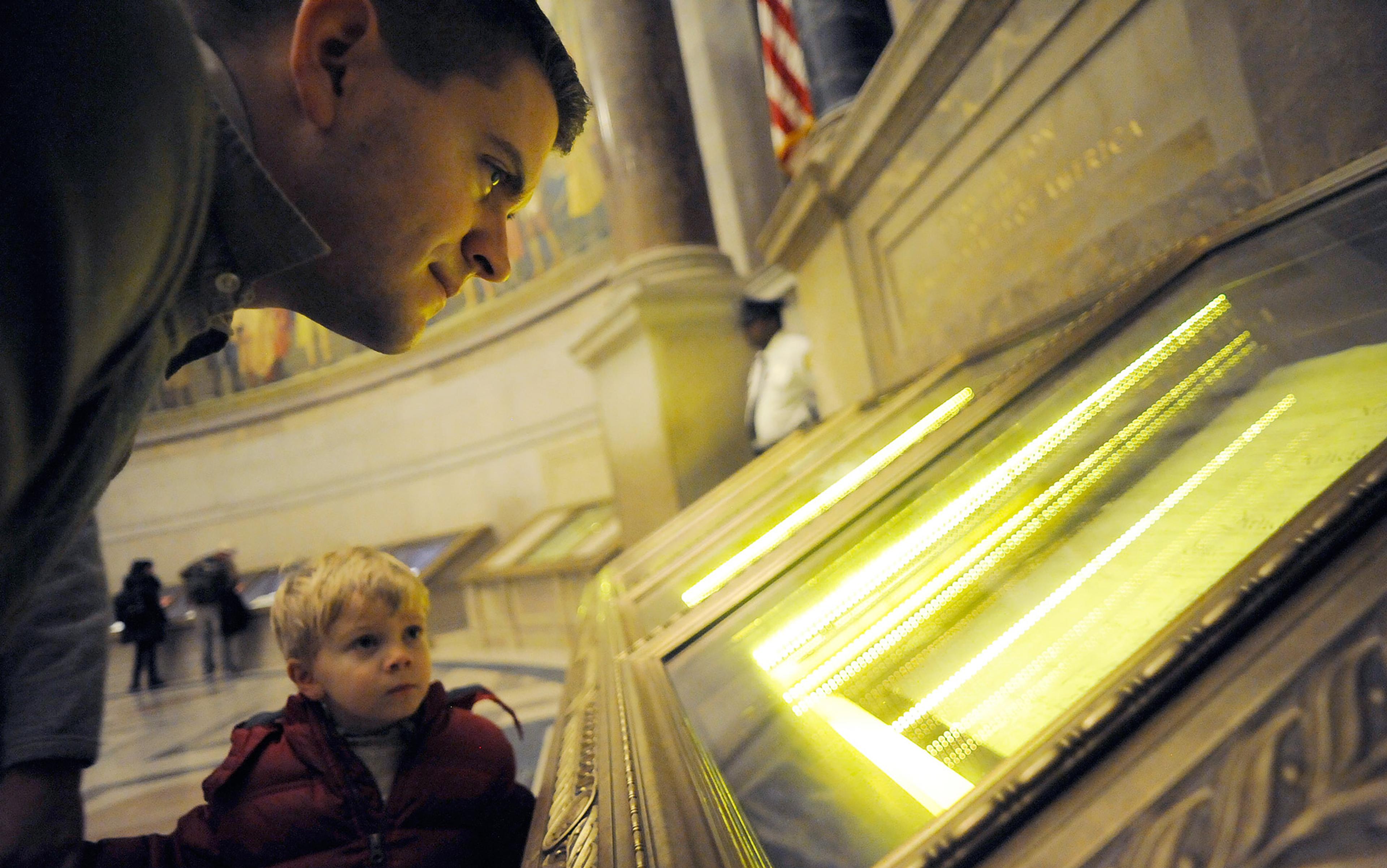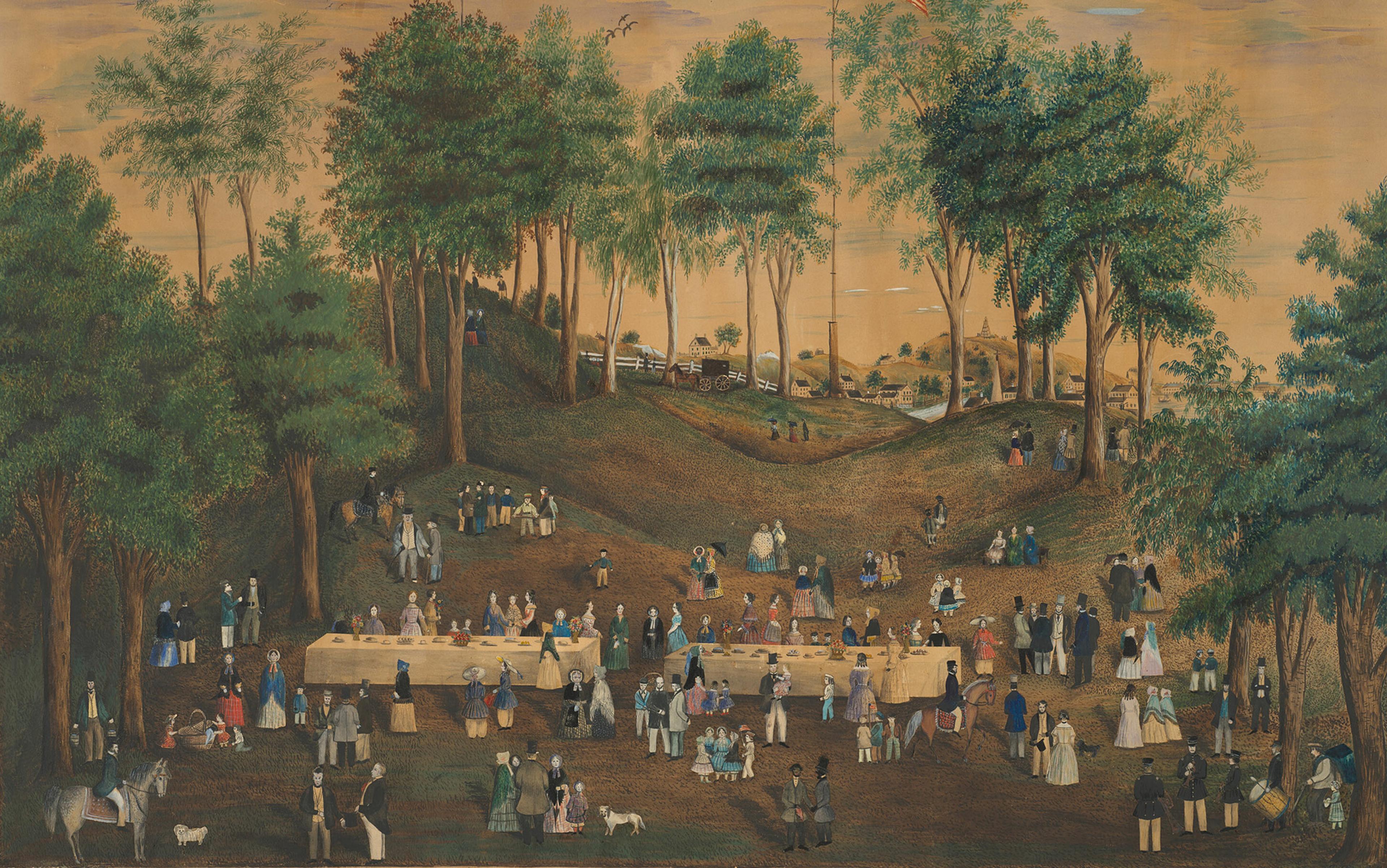Nations need history; it is a key genre for explaining the status quo. Modern nations and modern historical practices in the West developed over the same centuries, so the effort to harness the latter to the former is no surprise. Yet whether about the removal of statues, the veracity of journalism and public history projects, or the appropriateness of school curricula and course materials, questions about just how history serves the national interest have been fodder for perpetual controversy.
What’s more, in the past few decades, historians seem to be a poor match for such public and political uses of history. The rubbery framing of what history is, of how to assess it, and who it serves is frustratingly suitable to the stretching and even distortions that politics requires of the past. At the same time, it is regularly asserted that the public wants simple, consistent, even unchanging narratives of the past. Working in primary source materials and reading deeply in the existing scholarship, research historians emphasise the complexity and subtlety of historical processes that are often assumed to be ill-suited to the soundbites and pithy pronouncements of media and politics, and thus unlikely to find a public audience. The development of new sources, new methods and new perspectives that revise our understanding of the past constantly challenge fixed narratives.
However, the reframing of early America – a field and a period with an outsized claim on the history of democracy – suggests that complex and newly understood histories are meeting the moment for both the nation and its publics. Decades of research, reflected in close studies and synthetic histories, and the public writing of scholars alongside museum exhibits, are illustrating a wider appetite for nuanced history even as we hear more strident calls for the old ‘patriot’ narratives. A more capacious geography for early America, and deeper research in both slavery studies and Native American history, are showing not only a more complex era but much more connection among seemingly remote people, places and phenomena.
Conceptualised as the prehistory of the United States, originating in British colonies on the central east coast of mainland North America, early American history often and for centuries flattened out distinctive circumstances within a diverse population in favour of a unified portrait and a message of collective national ambitions. Including the eras of colonisation, the American Revolution and the early republic, early America has been the platform on which so much of the American national origins story rests. Whether it be the New York Times’ 1619 Project, which in 2019 set out to place slavery at the centre of the national narrative, or subsequent draft legislation to prohibit federal funds for such teaching, in favour of ‘the self-evident truths set forth by [the] Declaration [of Independence of 1776, which] are the fundamental principles upon which America was founded’, characterising early America is always resonant. It has always mattered as a way to explain what came next, be it a progressive narrative or the effects of racism and settler colonialism. Throughout US history, ordinary people and their communities, powerful economic and political interests, educational or reform efforts have all characterised early America, because it is both a starting point and a vantage point from which to understand the nation’s trajectory.
The traditional American nation-making narrative, from scholars, politicians, schoolteachers and popular culture, long emphasised British colonies on the east coast of North America founded in the 17th century. Small cities such as Charleston in South Carolina, Philadelphia in Pennsylvania, New York in New York, and Boston in Massachusetts became not only population centres but entrepôts for the swirl of people and goods in an Atlantic economy that included enslaving people by the millions. By the middle of the 18th century, free people in these cities were attached to the commercial power of the British empire as well as to a British identity. And yet mere decades later they offered some of the most robust resistance to imperial policies, tarring and feathering port officials and tax collectors or hanging them in effigy.
And then, there was the full-on revolution from which came a nation. The history there, too, stressed the east coast, from Philadelphia’s State House as the site of the Second Continental Congress and thus where the drafting and signing of the Declaration of Independence occurred, to Yorktown, Virginia, as the decisive battle of the American Revolution, and on through the early history of the US with the first capitols in New York, then Philadelphia, and finally Washington, DC. Places and peoples of the US, including the first new states, such as Ohio, formed from the Northwest Territory, and Louisiana from the Louisiana Purchase, were incorporated into the chronology of this traditional American history in a westward progression as the nation claimed their land.
In 2008, the historian Claudio Saunt at the University of Georgia analysed articles published since the 1940s in the William and Mary Quarterly – the leading scholarly journal for early American history – with a visual representation of their regional focus. North America looks like a beachball made up of the east coast with a bit of seaweed clinging to its left side representing every other region. The regional emphasis within historical scholarship was even more pronounced than simply an east coast bias. For so long, historians had focused so heavily on early New England and the Puritan migration that, when historians in the later 20th century began to also focus on the histories of the English in the early Chesapeake and Mid-Atlantic, it was seen as significant within the field. Early America, then, mainly meant the history of settlers on the east coast of North America, from Massachusetts to Virginia.
The common theme in this view of early America is connection
Since the 1990s in particular, the field began to expand significantly, both geographically and culturally. In recent decades, historians have revealed a much more complex, Atlantic and globally connected, fully continental and foundationally Native, multi-imperial history. Not only is what we know about this period fuller and richer, but the way that research insights are coming together now informs a very different picture of early America – and thus of the nation’s foundations and development.
The common theme in this view of early America is connection. For the purposes of analysis, scholars hive off subjects and chronologies into discrete chunks, but new research takes a very different approach. This isn’t just a matter of a discipline yielding to decades of criticism about increasingly focused specialisation; as Gordon Wood wrote in 2010, historical ‘monographs have become so numerous and so refined and so specialised that most academic historians have tended to throw up their hands at the possibility of synthesising all these studies,’ leaving narrative and synthesis (and popular history) in the hands of those who ‘unfortunately often write without much concern for or much knowledge of the extensive monographic literature that exists.’ No, new and freshly sweeping syntheses such as Alan Taylor’s American Revolutions: A Continental History, 1750-1804 (2016) and American Republics: A Continental History of the United States, 1783-1850 (2021) are summarising this much more capaciously conceived field. New frameworks of analysis have developed, some taking a wide-angle view, some with a much tighter ‘microhistorical’ approach, but all of them finding new and illuminating connections among the diverse people, places and phenomena of early America.
A critical factor in reframing this vaster, connected early American history is geographic, bringing the greater scope of the Atlantic Ocean and the full North American continental contexts into the field of view – as it would have been to the peoples of early America. A turn to Atlantic history produced a wealth of studies on the dynamic economic, political and religious developments that revealed the ocean to have been an early modern commercial highway, powered by the Atlantic slave trade. By 2002, David Armitage had already declared of historians of early America and other early modern geographies, ‘we are all Atlanticists now’. Two decades on, scholars continue to produce journal articles, monographs, synthetic works and textbooks dedicated to exploring the ‘Atlantic World’.
This perspective – seeing the Atlantic as both a venue and a connector – has fuelled new work on older subjects, such as the Puritan migration to New England in the early 17th century and making American exceptionalism look more like modest American iterations. Newer work from an Atlantic perspective has emphasised how indebted New England Puritanism was to an ongoing exchange between ministers and lay people on either side of the ocean. Far from developing a specific and isolated form of their Protestantism, the Puritans who had left England to settle in Massachusetts and then Connecticut and beyond continued to be influenced by critical political and religious developments in their original home country. This was as true for their intellectual lives generally as their theologies. As Sarah Rivett has written, for example, in The Science of the Soul in Colonial New England (2011), prominent New England Puritans participated in lively networks of exchange with English and European scientists.
Just as an Atlantic perspective is offering ways to see connections across the ocean among phenomena once viewed as geographically contained, there are also new ways to see subjects and people that had always been understood as inherently Atlantic, particularly the slave trade, slavery and enslaved people. Scholars engaging these vitally important subjects involving violence inflicted on millions of people have innovated both new methods and new resources. The Trans-Atlantic Slave Trade Database, for example, began to be shared with libraries and scholars all over the world in the late 1990s as a CD-ROM. Now Slave Voyages, a website containing information from that database, holds information on more than 36,000 individual slaving expeditions conducted between the early 1500s and the mid-1800s, as well as in addition thousands of trips in the intra-American slave trade.
While the website allows for visualisation, mapping and research in the database, the database itself has become a crucial piece of research infrastructure for early American history, as well as the related histories of South America, Africa and the Caribbean. Part of the power of the database is showing just how related those histories are, by illustrating the extent and reach of the slave trade across and around the Atlantic at both a macro level (the overall trade) and a micro level (the individual voyages and even personnel on those ships). The lives of more than 11 million people are documented in the database, which can be searched for specific years and locations to make ever more concrete the horrors of the slave trade: pages and pages of ships that landed in Virginia in the decades before the American Revolution, for example.
If the power of the database of voyages is in illustrating the extent of the trade, showing just how powerfully it was shaping the Atlantic economy and the politics of empire, scholars are also returning to look at the Atlantic itself – on board those ships, in transit as a commodity – as a critical site of the experience of enslaved people. As the historian Stephanie Smallwood at the University of Washington wrote in 2008, ‘considering the “saltwater” dimension of slaves’ lives allows us to piece together a picture of a place, a time, and an experience that does not otherwise figure in the archival record.’ The historian Sowande’ Mustakeem at Washington University in St Louis, recalling the extensive literature on plantation slavery, noted in 2016 that this focus on the Middle Passage showed how a ‘violently unregulated process … interlinked slaving voyages and plantation societies’.
Another geographical reorientation is ‘Borderlands’ history, which focuses primarily on the American southwest and its early American history, is primarily focused on Native Americans and the Spanish empire, with some attention to the eventual encroachment of Anglo and then American settlements. The late historian David J Weber and other Borderlands scholars have shown the relative weakness of the Spanish compared with the Indigenous people of the southwest. In 1680, for example, after a century of missions, settlement and violence, the Pueblo drove thousands of settlers out of the province of Santa Fe de Nuevo México and killed hundreds more. These were peoples who had lived in their lands for centuries, even after the arrival of Europeans in the Western hemisphere, and only in the 19th century did ‘Mexico’ and ‘the United States’ take shape around them.
Research is showing just how deeply embedded slavery was in early New England
The persistence of Indian power from the vantage of Indian country has now captured the attention of a new generation of historians. This is a change from scholarship looking to understand how colonial officials and settlers had wrested control of North American spaces – or perhaps shared control. Richard White’s influential book The Middle Ground: Indians, Empires, and Republics in the Great Lakes Region, 1650-1815 (1991) showed how, in an entire part of North America, neither Europeans nor Native Americans ever won sovereign authority. Rather, through a complex series of informal and formal negotiations, including purposeful misunderstandings that facilitated peace, they held a ‘middle ground’, living with one another for more than a century and a half. In The Native Ground: Indians and Colonists in the Heart of the Continent (2006), Kathleen DuVal wrote about how, in the central Arkansas River Valley, ‘Indians … called the shots’. The Quapaw had controlled their territory for hundreds of years by the mid-18th century, largely through skilled diplomacy. The Osages preferred military power but to the same end of effective territorial control. Alongside the Choctaw, Chickasaw and others, it was Native Americans who managed access to land and resources, and Europeans, whether French, Spanish or, less regularly, English, who were firmly on the back foot.
The geographical expansion of ‘early America’ is just one aspect of how the research field has changed. Scholars are also breaking other boundaries, revealing the essential connections among events and phenomena long treated as distinct, including new analyses of Native American and Indigenous history, and of slavery and the enslaved that show even the classic region of early American scholarship, 17th-century New England, in new light. In Our Beloved Kin (2018), Lisa Brooks offered a ‘new history of King Philip’s War’ – a late 17th-century conflict between colonists and Native Americans long understood through the prism of the violence wrought on settler as well as Native communities, and thought to be the final blow to Native claims to sovereignty and power in the region. Working from a Native perspective, Brooks revealed the importance of Weetamoo, a female sachem and a critical leader in the conflict overlooked in previous accounts that relied on settler narratives – including a classic of American literature, A Narrative of the Captivity and Restoration of Mrs Mary Rowlandson (1682).
Research is also showing just how deeply embedded slavery was in early New England. Households from Puritan Boston to Connecticut River Valley towns to the Patriot strongholds enslaved African-descended people. The Atlantic slave trade was massive in scale: many millions of African-descended people were enslaved, and so many people were directly involved in the trade as buyers and sellers of human beings that it is hard to overstate the extent to which slavery pervaded the political economy of early America. What people ate, what they wore, where they lived and how they worked were, in most cases, all touched by the effects of the slave trade and the labour of enslaved people.
New histories of Native Americans and slavery have come together, too, in New England and elsewhere, to illuminate the pervasive impact of the slave trade. The slave trade reshaped Native warfare and captive-taking, such that Native Americans were enslaved and traded away out of North America, just as Africans were brought on to the continent. In the aftermath of King Philip’s war, for example, hundreds of Native Americans who surrendered to the English colonists were sold to the Caribbean as slaves. In the upper Midwest and French Canada in the same period, Native warfare ended up providing captives to the Europeans eager to buy, trade and sell Native people into slavery. In short, the enslavement of Native Americans was responding to the plantation economy fuelled by the enslavement of Africans. In short, there is no early American history without Native American and Indigenous perspectives, without the history of slavery and the enslaved, and increasingly, without an understanding of the interconnectedness of these histories.
No one would mistake the population of the US rendered on porcelain for an official report, but it is emblematic of the specific version of early America that came to stand for the whole. Proclaiming ‘Prosperity to the United States of America’, a ‘Census Jug’ was made in England in the mid-1790s, part of a wave of novelty printed pottery that flooded the American market in the late 18th century. This cheerful, handled piece of homeware was meant to be a pleasing representation of the US and its prospects, explicitly connecting prosperity to ‘Agriculture, Commerce, and the Freedom of the Seas’, a motto on the reverse of one version. But it also made claims to authority by listing the population within commercial motifs, including images of ships, barrels and shipping boxes, based on the newly completed and reported first federal US Census. The figures were drawn directly from the final report of the first US Census, printed in 1793, where they were ‘truly stated from the original Returns deposited in the Office of the Secretary of State, Th Jefferson.’
More consequentially, the pottery did not detail the key distinctions among people that the census required and reported. The US marshals, who were the original 1790 census-takers, assigned categories to the people they surveyed: ‘Free white Males’ 16 and older, ‘including heads of families’; free white males under 16; ‘Free white Females, including heads of families’; ‘All other free persons’; and, lastly, ‘Slaves’. Under provisions of the Federal Constitution, until after the Civil War, the enslaved population counted as 3/5ths of its total for purposes of Congressional representation, meaning that just one of the implications of the large population of enslaved people in the south was increasing the Congressional representation for those states.
And how were Native Americans counted in that first census? It’s hard to say. Some of the regions where the census was incomplete were places with more Native people. Some argued that the sovereignty of Native Americans placed them outside the census. And in places where we know there were Native Americans, such as New England, where a rhetoric as well as a policy of erasing their existence was well underway, they might have been counted in the category of ‘other free persons’ or in some cases, ‘slaves’. The chipper porcelain list of an American population engaged in commerce made no account of the people who were made commodities in that economy. It flattened and distorted in order to render the nation and its people singular, and united.
That deeper, richer, fuller past is better suited to explaining our complex present
The vast early America that is emerging from historical scholarship not only illuminates the complexity and diversity of the past, but also offers a fresh relationship with American national history. In its sharp departure from the traditional east coast and British colonial focused past, this is also a more usable past. More than a century ago, the literary critic Van Wyck Brooks coined the phrase ‘usable past’ to describe how Americans could use their history to create a more democratic future, and generations of scholars, teachers and writers have mulled and used this framework in classrooms and museums and beyond. Two years of debates about the 1619 Project have revealed just how conflicted the usable past can be as traditional historians argued that the American Revolution was not essentially about slavery but liberty, and the project’s architect and principle author, Nikole Hannah-Jones, asserted the critical importance of understanding slavery at the root of American history, and its deprivations at the constant centre of African American experience. What is at stake is the consequences of the past for the way we posit the present and the future.
Historians do not typically think of their research in this way; our research reveals the world as it was, before we knew what it would become. Perhaps this also means that historians often seem to be working at odds to the needs of the nation. Certainly in the US, research historians have been delivering a very different picture of the American past than official commemoration, monuments and the appetite for popular history suggest that the American public wants. What is on the shelves or bestseller lists is decidedly not what scholars are producing, and the longstanding claim is that this divergence is indicative of a public desire for patriotic and straightforward history. But is it? The success of the 1619 Project, even if measured solely in sales and readership, suggests otherwise. And still the most shocking feature of this project is neither the assertion that slavery and race are central, even foundational, to American history, nor the reaction to decentring liberty, but that this would be controversial at all, given the weight of decades of historical research documenting it.
In her book This America: The Case for the Nation (2019), Jill Lepore argues that nations are ‘held together by history’ and that, ‘to make sense of themselves’, nations need ‘some kind of agreed-upon past’. The dominant form of this ‘agreed-upon past’ has long been a simplified one. But who must agree upon that past? The simplified, unified past was the product of commentary and history crafted by a narrow group ostensibly for the good of the whole. All of this becomes much harder to sustain with a more complex past both reflecting and told by a broader and more diverse group of people. This much vaster early American history serves the nation not as a singular, let alone agreed-upon past, but as an ongoing process of discovery about complexity and connection. In addition to being good history from a historian’s vantage, based on fresh research, new methods and new perspectives, that deeper, richer, fuller past is better suited to explaining our complex present. It can help us envision the future of a complex, democratic polity.
